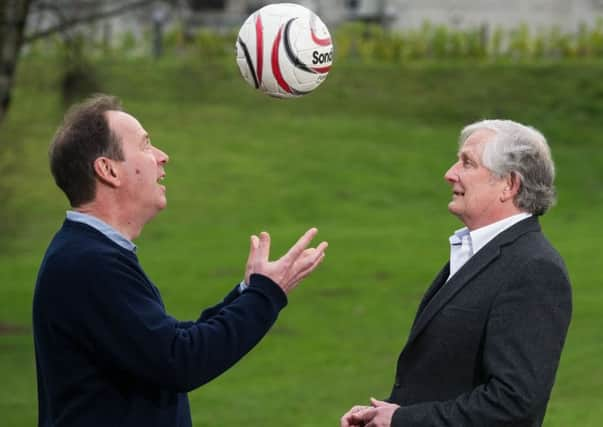Revealed: How Edinburgh gave the world its first football club


Researchers have uncovered new details about the Foot-Ball Club of Edinburgh, which was established in 1824, decades before the formation of the Scottish Football Association or its English counterpart.
The side, drawn from Georgian and Victorian Edinburgh’s professional classes, played a cruder version of the game we know today. Matches routinely involved however many players showed up on any given Saturday, with the participants permitted to push and shove one another.
Advertisement
Hide AdAdvertisement
Hide AdFor years, it has been assumed that the club was an isolated historical quirk that had little bearing on what would evolve into the world’s most popular sport.
But sporting historians Andy Mitchell and John Hutchison have discovered the capital club had a “far- reaching web of influence”, with the children of its members going on to represent the Scottish national team.
The Foot-Ball Club was founded by John Hope, a 17-year-old student lawyer, as a way of recapturing the games of football he took part in during his school years. While those formative encounters were rough and ready affairs, Hope was integral in refining the game. His notebooks detail instructions on how to make a football, while a set of six rudimentary rules from 1833 specify a defined playing area with goalposts and a ban on tripping.
Although there is not a single mention of the club in contemporary newspaper articles, Hope was an obsessive chronicler, amassing more than 200 boxes of personal papers by the time of his death in 1893.
With many of the documents newly digitised by the National Records of Scotland, Mitchell and Hutchison have been able to identify the 324 members of the club during its 17 year-long history. Although the majority went on to become lawyers, their number also included bankers, ministers, doctors and army officers.
One player, Charles Kirkpatrick, had a son, James, who became FA Cup winner with Wanderers FC in 1877 and was chosen to captain Scotland against England in the world’s first international match in 1870.
According to Mitchell, the lineage is evidence of a “vibrant football culture” that survived long after the club played its final game.
“The club was more influential than at first appears. It’s been hard to draw very strong ties between the club and the birth of codified football in the 1850s and 1860s, but we are establishing those links now,” he said. “Football was socially respectable from quite an early period and was far from a mob game. It was widely played by respectable people.”
Advertisement
Hide AdAdvertisement
Hide AdThe researchers, who are planning to write a biography of Hope, believe more should be done to recognise the club’s place in football history.
Mitchell added: “Our research is ongoing, but the Foot-ball Club of Edinburgh clearly developed an ethos of football which was passed down from father to son, creating a sporting culture that extended later in the century throughout Edinburgh and further afield.”